13 Amazing Study Techniques you should try this year
Here is a list of efficient study methods that students can try out before selecting the one that best suits them

When it comes to enhancing academic performance, time management is crucial, but most of us typically struggle with it. We can finish most of our tasks if we make the most of each day and use our time well.
There is not only one time management or study method that every individual should use; instead, it differs for everyone. For example, writing a short story will take less time than writing a long one or an essay. If you work on something for an hour, you might need a 5-minute break, but if you have to work longer, your brain might need more rest.
You can use various strategies, such as Pomodoro and others, to enhance your academic performance. Although the Pomodoro technique is the most well-known, you can also use several other techniques to improve your academic performance.
The Best study techniques you are looking for
The top methods used by college students and other students to improve their academic performance are listed below. Take a look at the list that is provided below.
Flowtime method
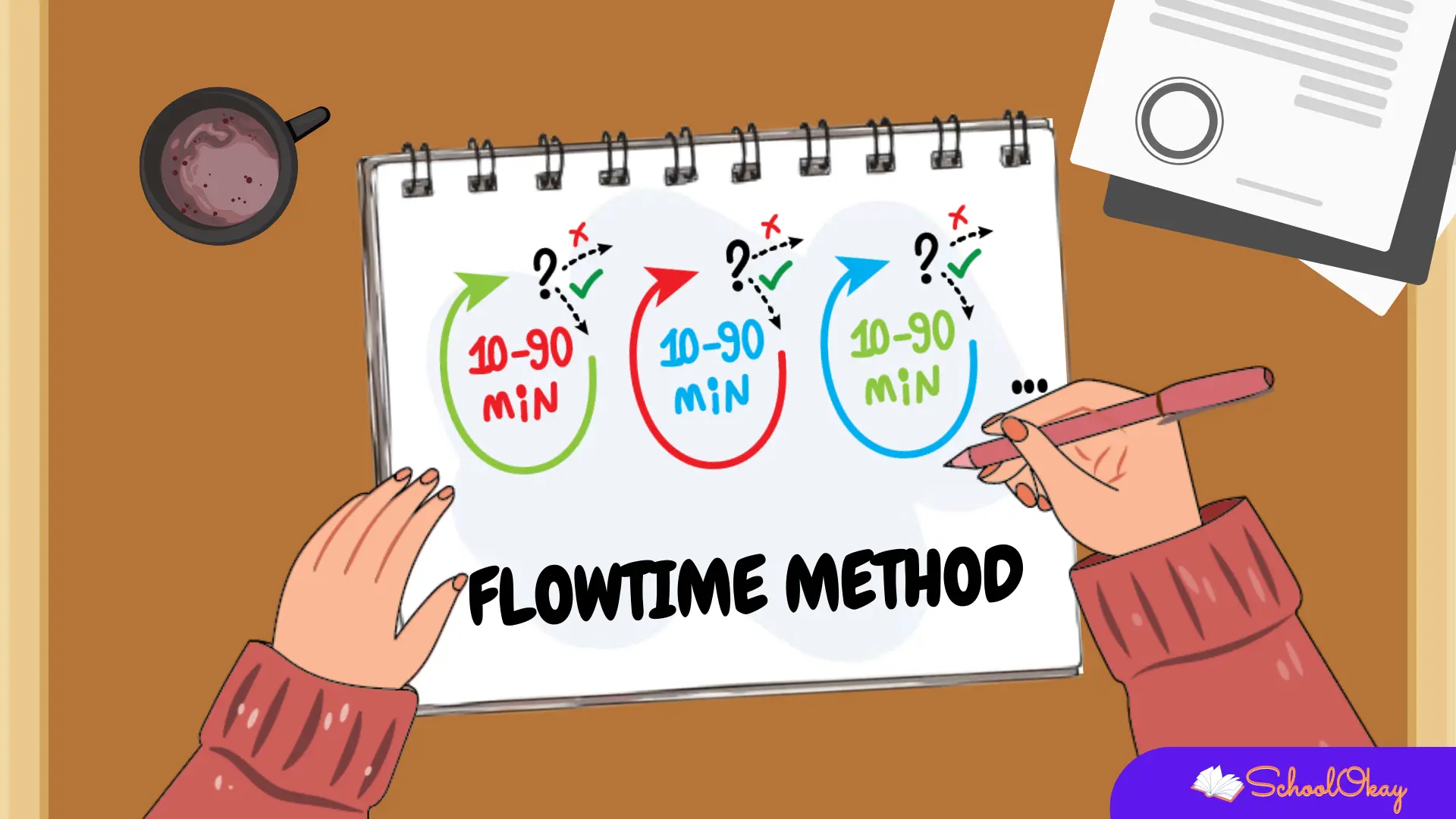
The best way to maintain your flow state while allowing for breaks during study sessions is to use this flowtime technique.
If you believe that rigid breaks disrupt your workflow, then the flowtime method is something you should try. You must work for a set amount of time using the flowtime technique before taking a break.
As the flowtime technique lets you choose the length of your work sessions and break times, it is more likely than the Pomodoro technique to engage your brain. Utilizing this method will keep your thoughts uninterrupted and encourage creativity.
You must first record your productivity to use the flowtime technique. You should also note when you begin studying or working, followed by when you become distracted. You need to keep track of when you started working, how long you worked for, how long you were distracted at the end, how long your breaks were, and when you finally stopped.
Following this guide, you can use the flowtime technique to improvise your studies.
- Using a flowtime technique, keep track of your work and break times.
- Choose the task you will tackle first.
- Keep track of the date or time you began working on the project.
- Instead of working when you are distracted, work until you feel like taking a break.
- The length of your break should be noted.
- Continue in this manner for the remainder of your workday.
- Now look over your log to see how productive you were.
You will be able to spot the patterns once you record a few of your sessions using this method. You will be able to identify the times of day when you are most productive and in which zone.
Time blocking and time boxing method
This is the best way to visualize your productivity and schedule.
This time management and study method entails setting aside specific blocks of time on a calendar for task completion. If you are managing several projects at once, this approach is ideal.
Time blocking method
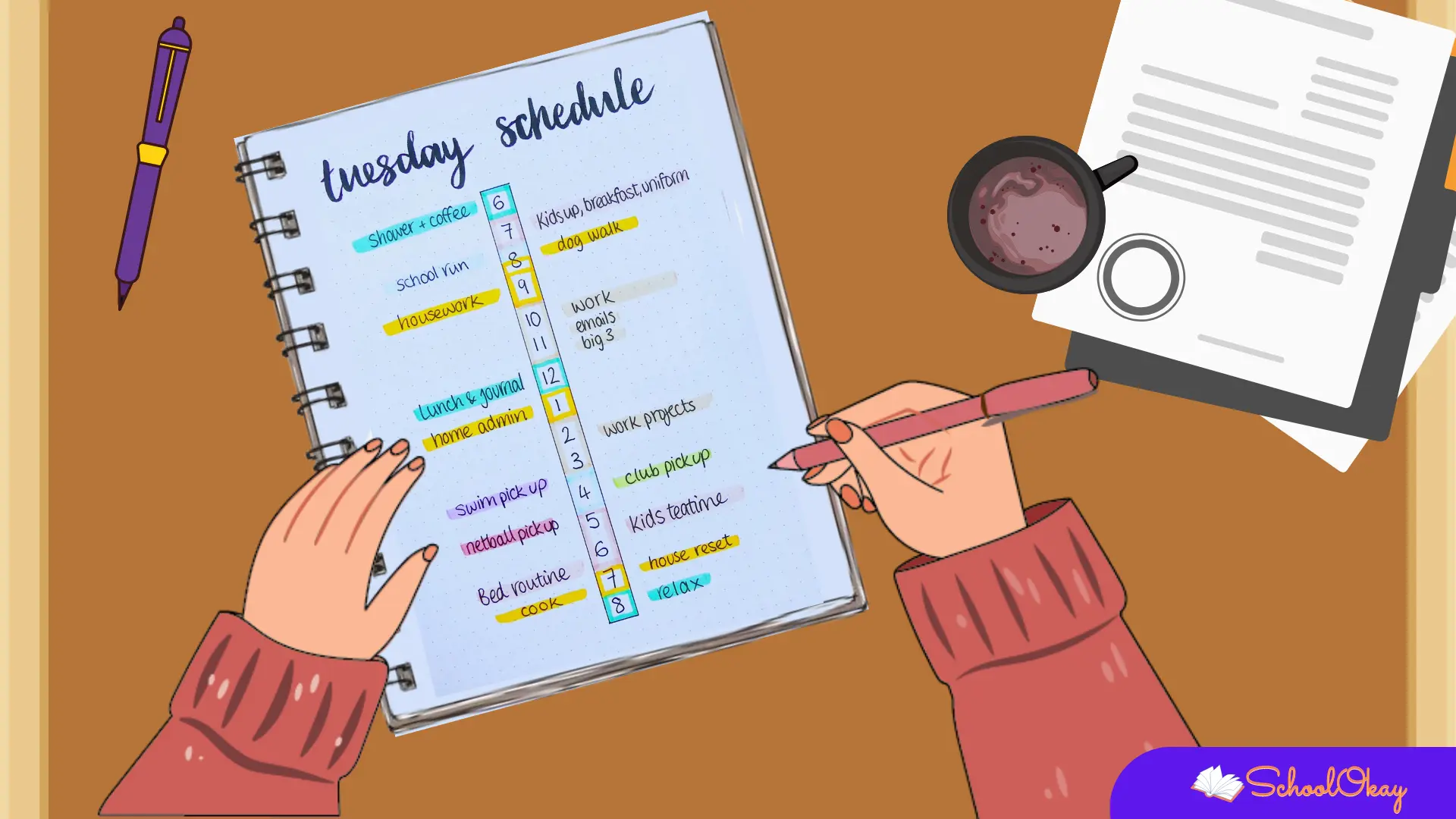
With this approach, you choose what you will work on and when you will begin. People frequently use this technique to organise their work for the day or the week and manage numerous tasks and projects. If you effectively plan your day, you might be able to cook dinner, write an essay, and complete other tasks on the same day.
If you use this technique for time blocking, you will undoubtedly be able to stick to a schedule regardless of whether or not you can complete the task during that period.
Time blocks are adaptable, so you can work on a project for a long time or shift your block to accommodate a task that needs immediate attention.
You can review your uncompleted blocks at the end of the day and plan your blocks accordingly at the following time.
Time-boxing technique
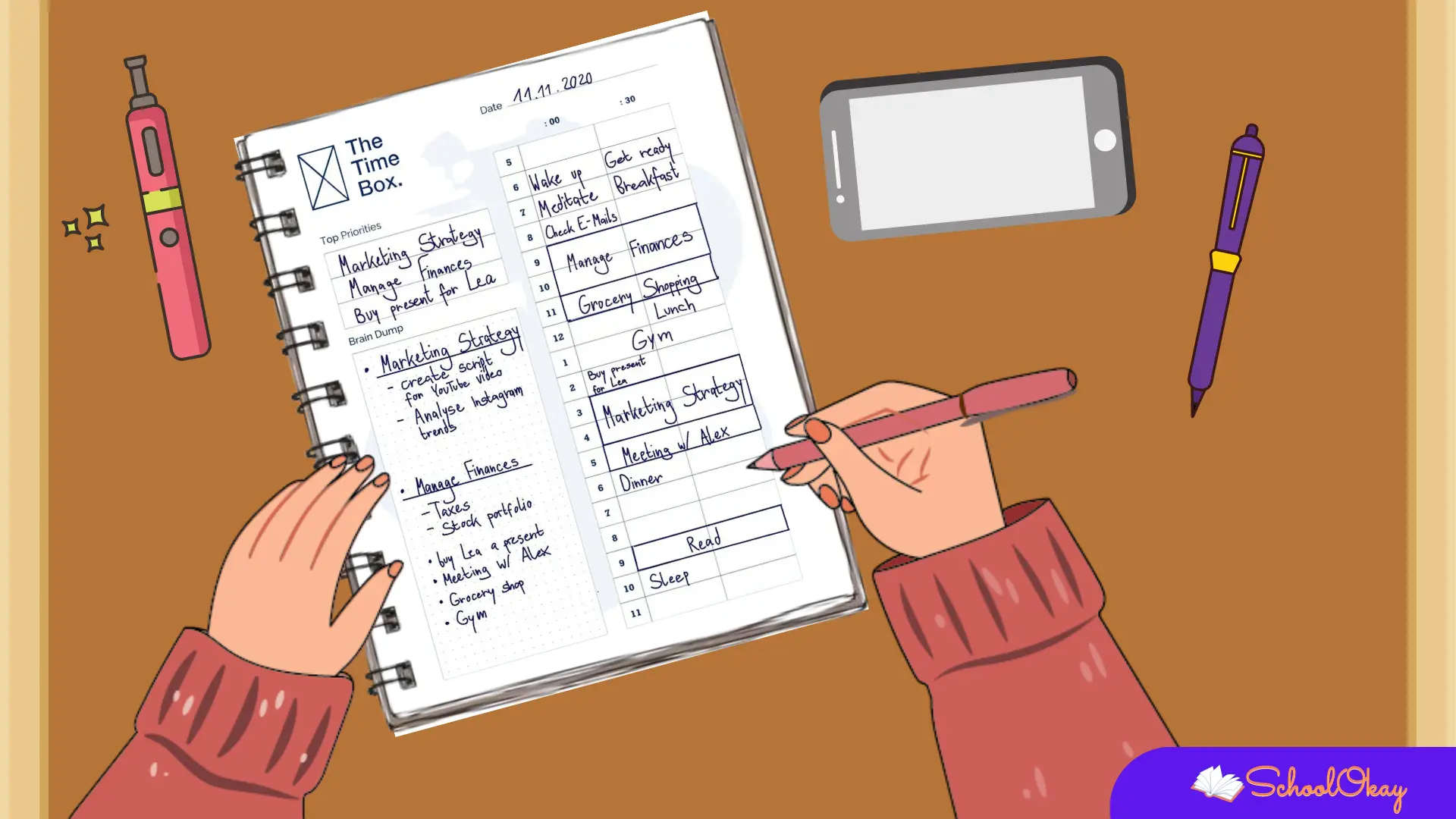
The timeboxing method is more rigid than the time-blocking method because, for example, if you decide to sit and finish a task at 4 p.m., you must sit at that time and can only take a break at the decided time or when the task gets finished.
This is a great way to manage large projects because, while you can use the time block technique to manage smaller projects, the time box method is much more effective for managing large projects. After all, they often have strict deadlines and demand a lot of dedication.
By colour-coding the Google calendar with different blocks depending on different tasks, it is easiest to lay out both time blocking and time boxing techniques.
Animedoro method
You can use this technique by rewarding yourself after finishing a task or project. This approach is an improved variation of the Pomodoro technique. This method is straightforward and uses a simple strategy like a Pomodoro of 25 minutes of work and 5 minutes of rest if you frequently find yourself distracted by a phone.
You can take longer breaks of about 15 minutes after finishing more work or after working for more time.
This Animedoro technique includes more time for focused work, such as 40 minutes of work and then 20 minutes of rest where you can watch your favourite show or eat because many people don't find this 5-minute break sufficient.
Watching your favourite show whenever you want after completing the work can be more relaxing and de-stressing, allowing you to work uninterrupted and complete your task without too many interruptions.
52/ 17 rule
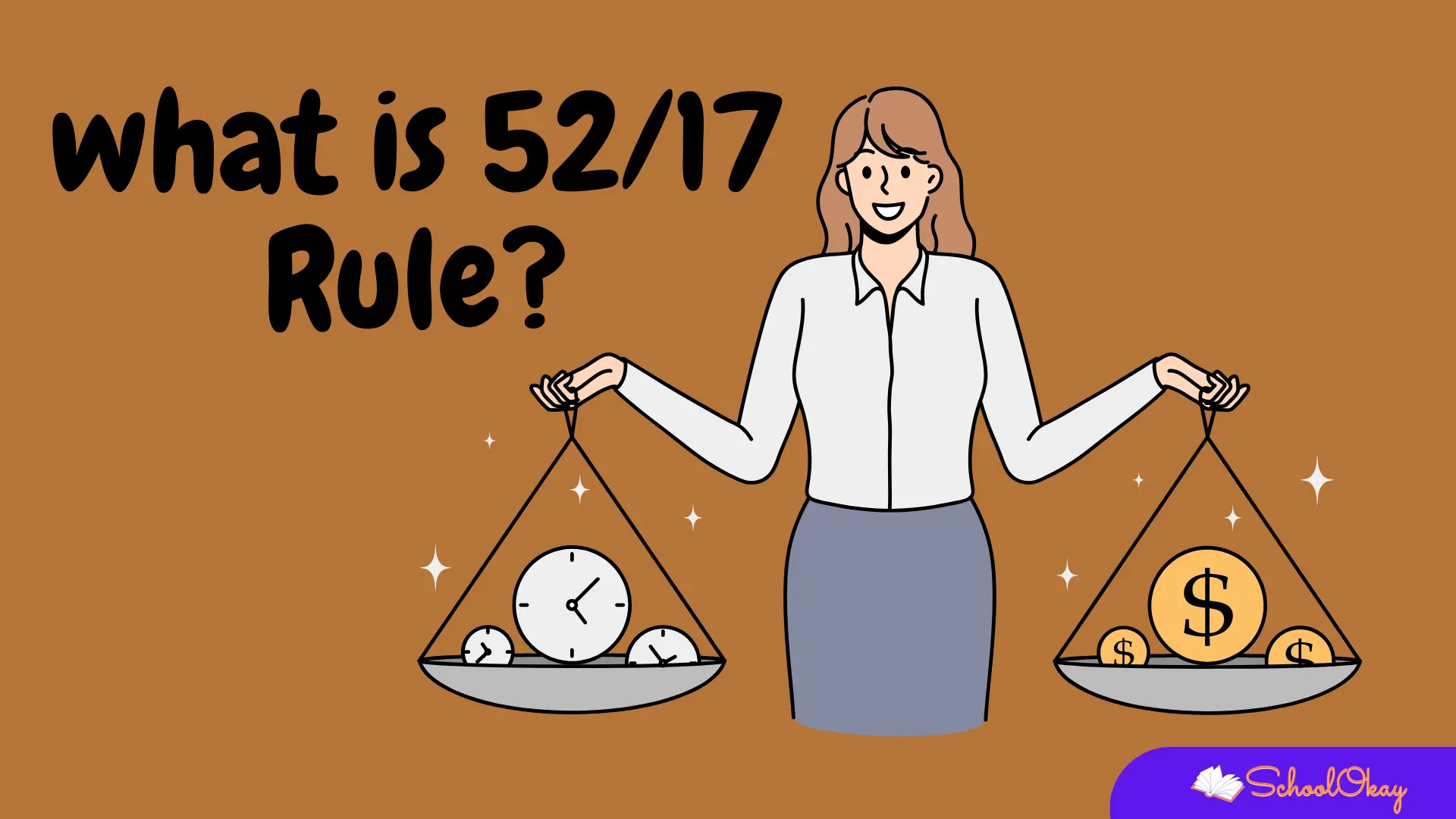
This method best suits those requiring extended study sessions and breaks.
This rule is based on research that was written up in Muse. This study examines the work habits of the DeskTime app's most productive users. According to the study, the most effective workers worked nonstop for 52 minutes before taking a 17-minute break.
This rule is based on the "100% dedication" theory, which states that if you work diligently for 52 minutes, you don't need to work or scroll through emails for the remaining 17 minutes. Instead, you can take a break and enjoy your time.
Additionally, taking a 17-minute break is preferable to a 5-minute one because it increases maintenance of attention. You can combat cognitive boredom in these 17 minutes by resting completely. Your brain can become fatigued after several work hours, but a short break will help it recover.
The frog-eating method
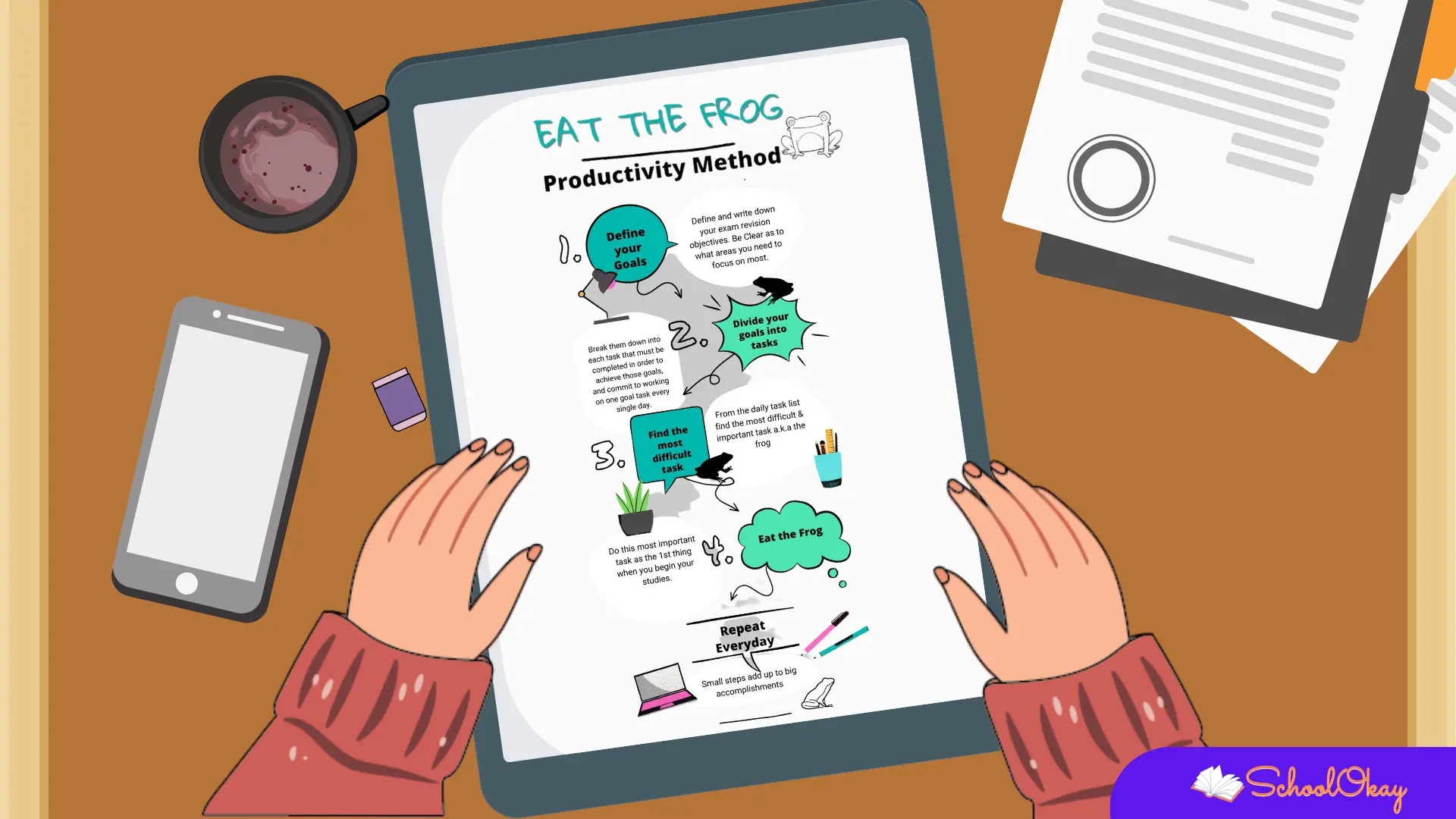
This method enables the user to take on essential or challenging tasks first. The Mark Twain proverb "Eat a live frog first thing in the morning, and nothing worse will happen to you the rest of the day" inspires this technique.
You don't have to be an early bird to use this method. Using this method, you can accomplish the most difficult tasks and move on to the easier ones. It also ensures that only the most critical tasks are completed in advance.
You'll need the following advice to use the "eat that frog" technique successfully:
- Determine the task you must complete first before moving on.
- Don't over plan at first; concentrate on your next move.
- You must arrange your tasks according to their difficulty and importance.
- Before beginning any other tasks, complete the most important task first.
Eisenhower matrix
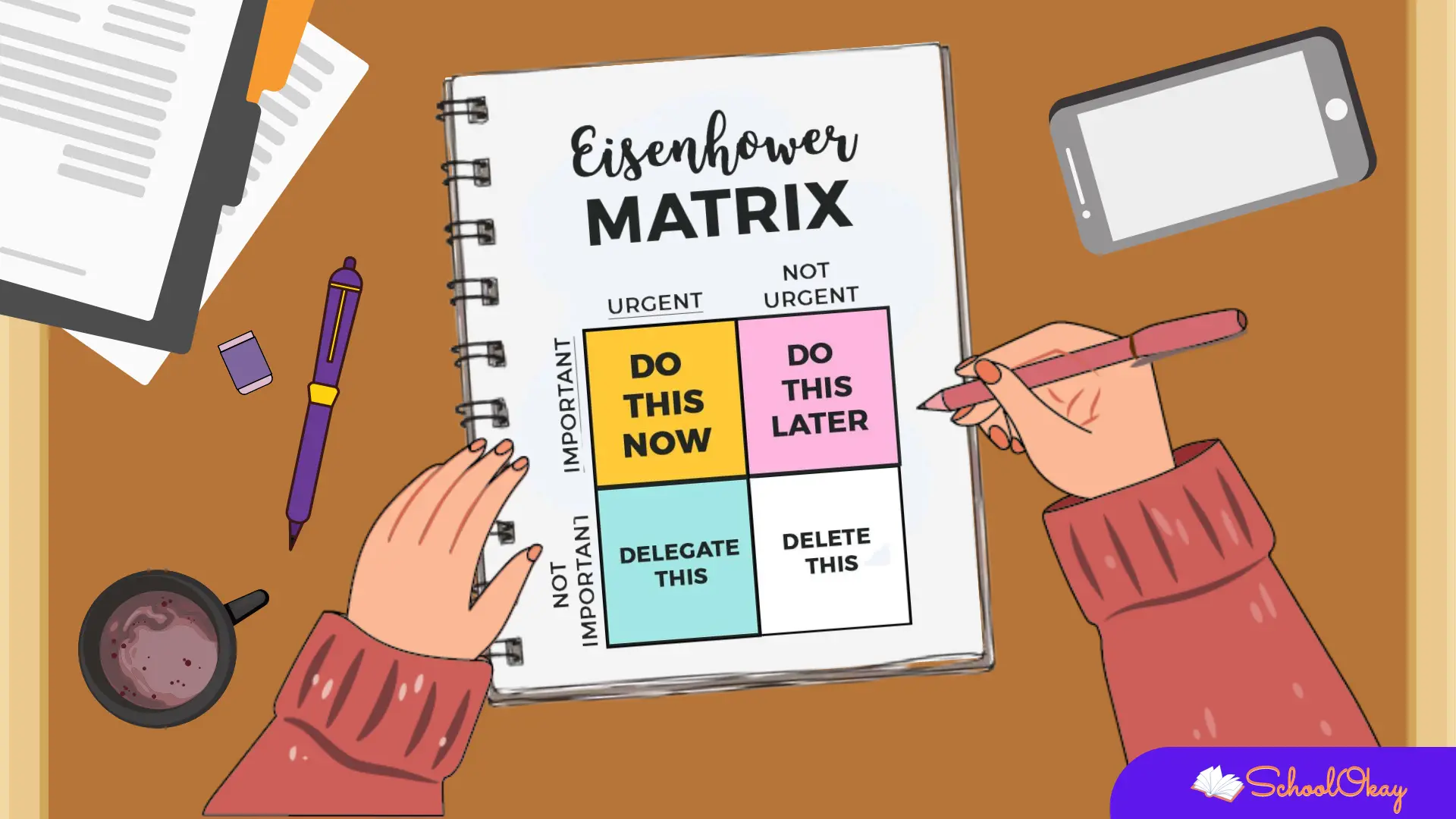
Task prioritisation, elimination, and delegation are included in this. President Dwight D. Eisenhower developed this technique to aid him in completing some crucial tasks. This technique divides tasks into four quadrants.
- Do first: Do the tasks you must complete immediately and have deadlines that must be met first.
- Plan: This includes completing tasks that can be completed over the long term, don't require immediate attention, or can be scheduled for the future or later.
- Delegate: These tasks can be given to someone else if they aren't urgent and you still need to complete them.
- Don't do: This list includes tasks you don't have to finish and are not required.
Now, certain variables determine which tasks belong in which quadrants:
- How close your deadline is: You can add tasks to the schedule quadrant if they won't be necessary for another week or so.
- Whether the task you're working on has a deadline, Complete the tasks that must be completed first and have a deadline that must be met; these tasks should be added to the first quadrant.
- Regardless of whether a task is necessary, you can add it to the "don't do" list if you have a lot of work and some optional tasks that you can skip to focus on high-priority tasks.
- Your available resources include team members and virtual assistants, both of whom you can put in the delegate quadrant.
The Eisenhower matrix can be kept organised by keeping the graph to 10 tasks. This method will assist you in setting priorities, limiting your workload, and eliminating less critical tasks. You can learn what is urgent by exploring the quadrants.
Don’t break the chain method
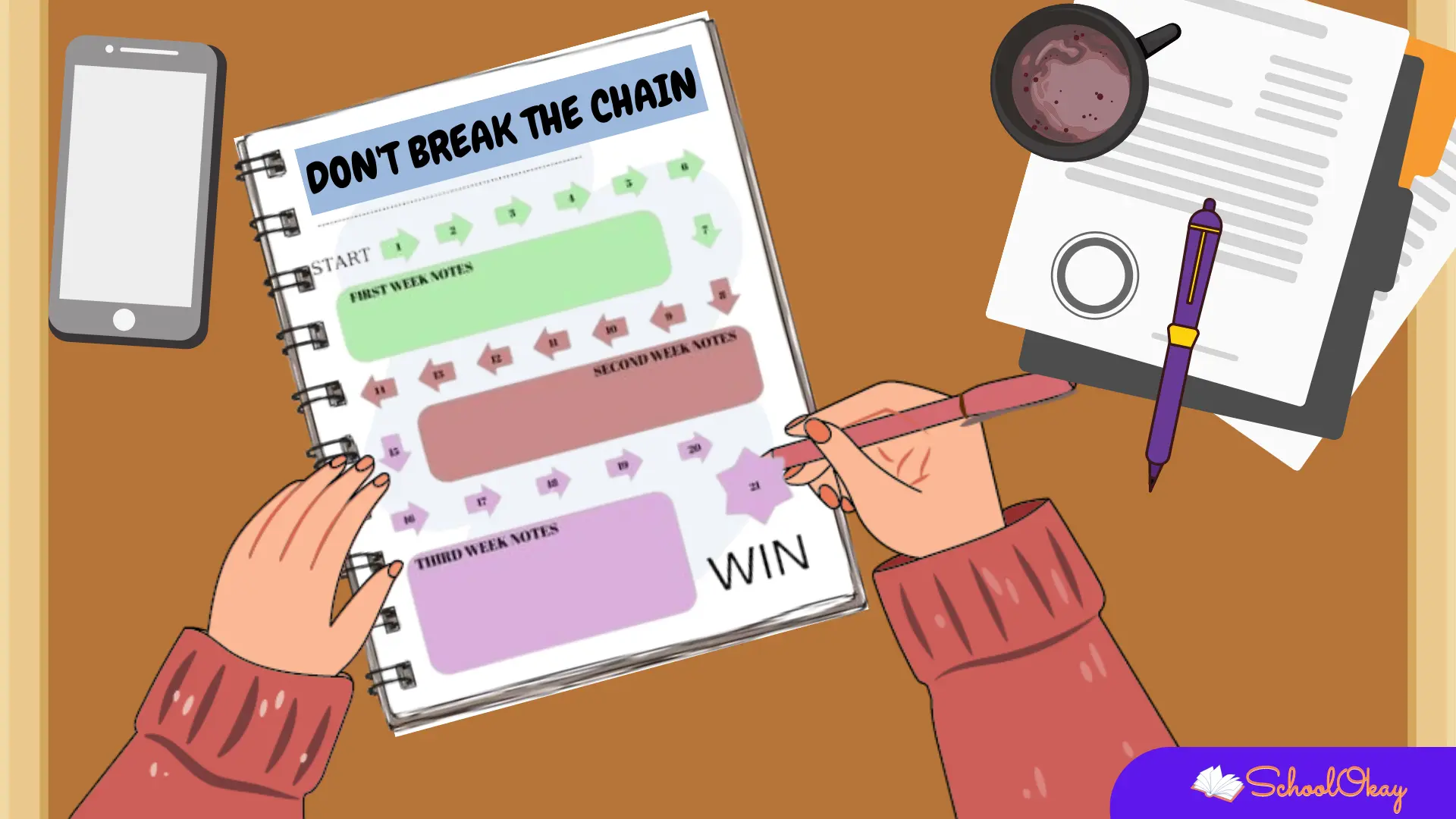
This method that maintains a study break is the best for developing consistency. Jerry Seinfeld, a comedian, offered suggestions on strengthening your work ethic. The comedian once advised a budding comedian to write one joke daily to improve. He claimed to have a large calendar at home, and every time he wrote a joke, he made a red cross in that spot.
After a few days, he had a broken chain of crosses, which inspired him to continue writing and keep the chain he had created. Building a chain suggests that reaching your daily goals has become ingrained in you. Habits are difficult to form but more difficult to break once formed.
The best way to implement this strategy is to choose a significant task each day and complete it. Start with a straightforward task you can easily complete, and once you do it daily, it will become a habit.
When you first start out, you should avoid setting those goals that are difficult to achieve and instead focus on attainable goals. It is impossible to attempt to accomplish thousands of goals, but you can try to accomplish a few daily.
Using a traditional wall calendar or Google Calendar can serve as a visual reminder that you may also need to help you reach your goal.
GTD Method
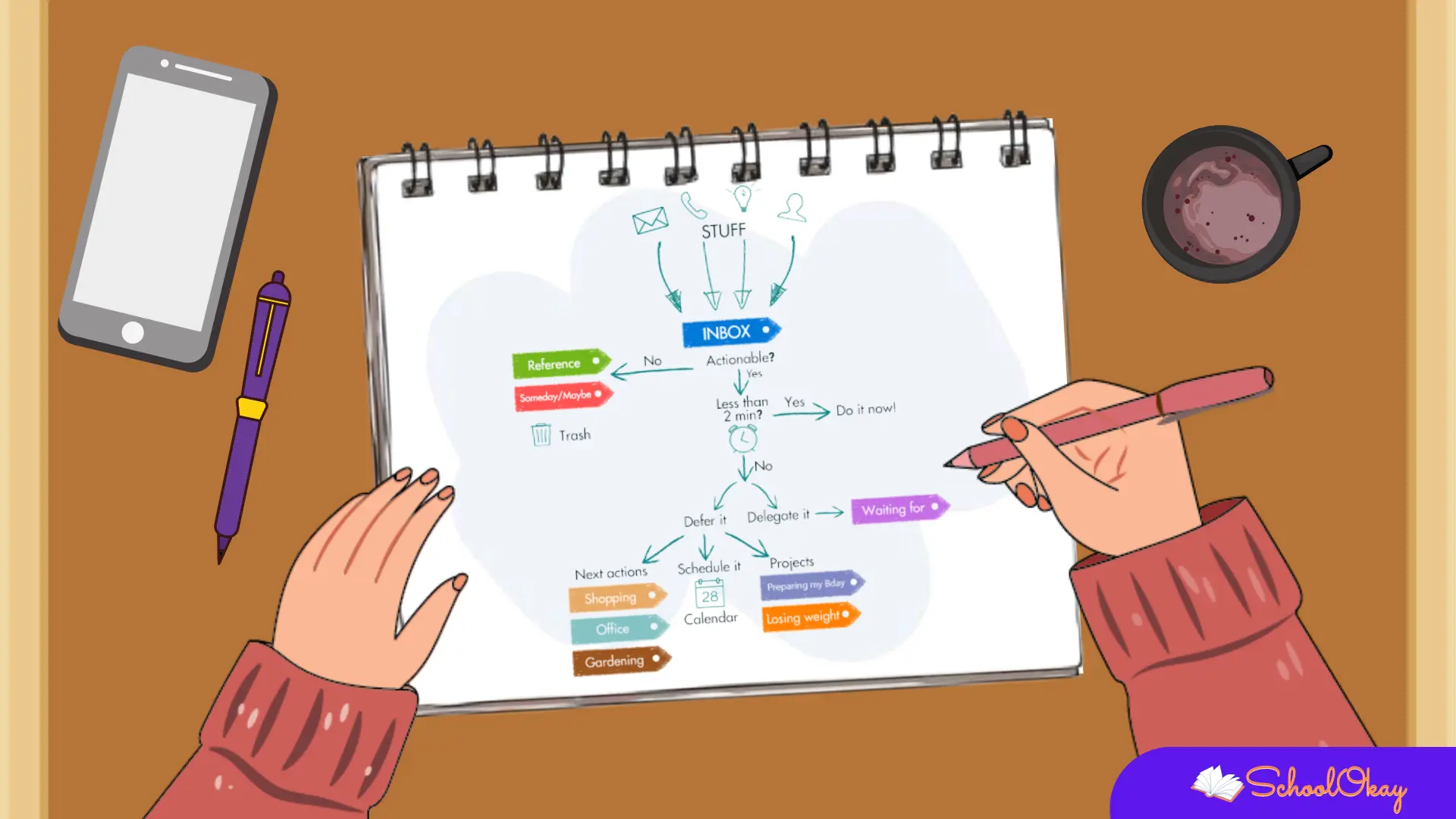
This is the best way to manage larger projects and record your ideas. The time management method, GTD, or "Getting Things Done," was introduced by productivity consultant David Allen.
This states that if you have too much information in your brain, you will spend more time thinking than actually accomplishing the task. This technique organises your thoughts in an external system, such as a notebook, task-management app, or something else.
By keeping track of the tasks, you can identify which ones are crucial and ensure that your thoughts are well-remembered so you can perform at your best on each one.
This GTD approach is based on five fundamental principles. These include
- Record: Compile your data into the tool or database.
- Clarify: Determine whether the task you want to complete can be completed, deleted, or postponed.
- Organize: Put your tasks and their reminders in order of importance.
- Reflect: To stay current, review your tasks and categories regularly.
- Engage: Use organisational tools to help you decide on assignments and tasks.
- This method is beneficial if you frequently handle several tasks at once or tend to forget small details.
Use study discord servers.
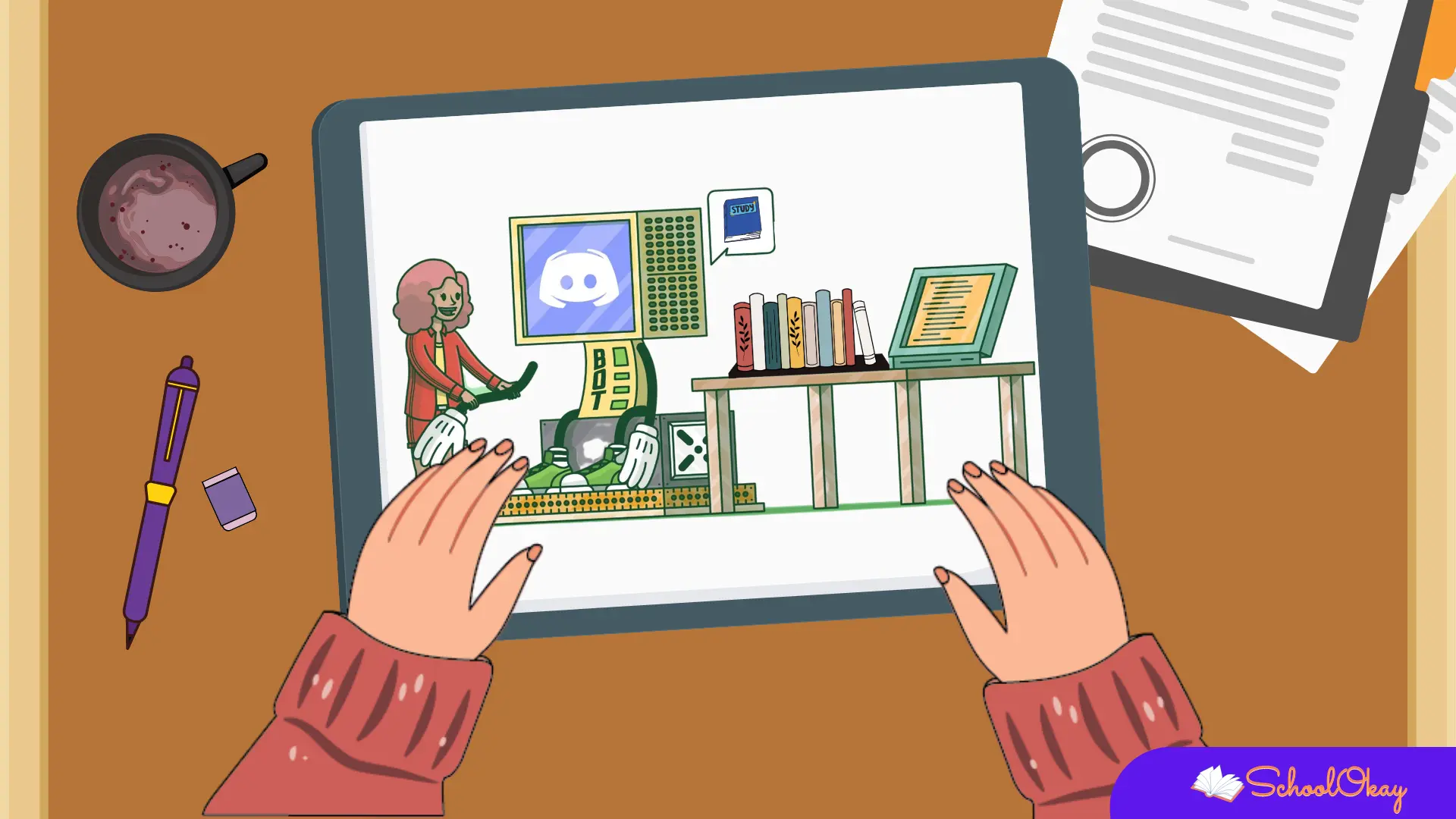
The best approach for studying better with virtual study partners is this one. Learning alone can be challenging for students because schools favour group study. Using study Discord servers, you can connect with people studying, working, and creating across the globe.
Some servers will simplify your workload to make your day more interesting, and some servers have buddies who will not only keep you motivated.
Let's look at a few of the research Discord servers:
Study together
With almost 420,000 members, this is one of the biggest study discord servers. You can schedule video calls and live chats, study with specially created bots, track your study time, and compete with other users on the leaderboard.
The language zone
This one is one of the most considerable Discord servers available to you for immersion in other cultures and studying other languages. You can play games to expand your vocabulary and take free weekly language classes on this Discord server.
Homework help
This Discord server is a hybrid of a virtual tutoring service and a study discord. You can collaborate with other students to get past your academic obstacles and get help with your assignments from the server's committed volunteers.
Last words
You can use many methods if you are committed to learning and want to organise your time well. Pomodoro is one of the most well-known study methods, but this article will also introduce you to several other methods.
These methods are the best to select the best suits your work. All methods are effective, and using them correctly will enable you to study effectively and perform at the highest level at work.
Also read:
How to stay focused on studies.
Best books to focus on studies.
Share and subscribe to the blog by email.

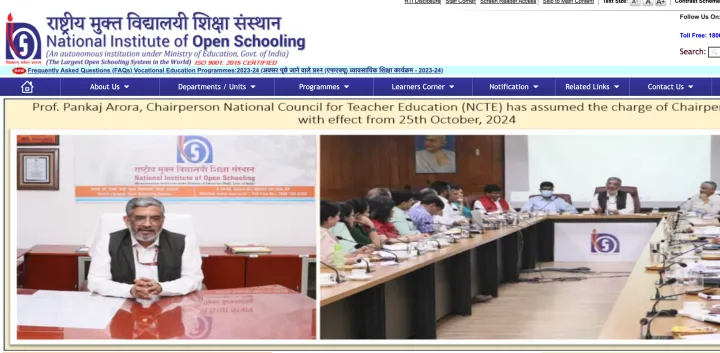
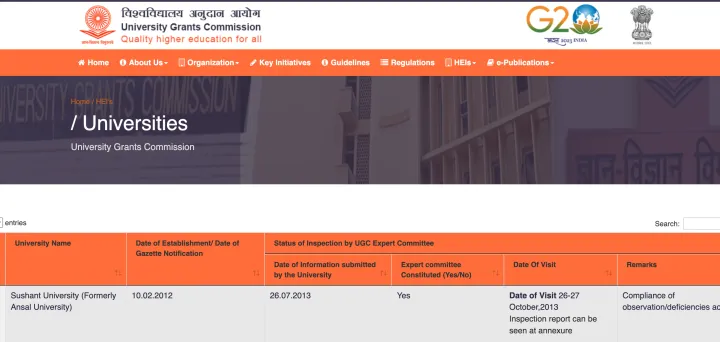
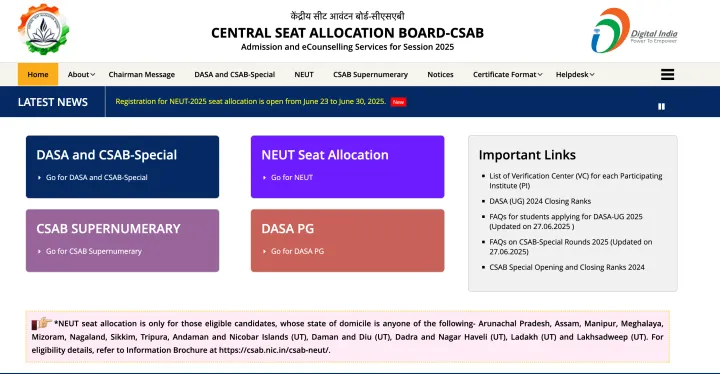
Comments ()